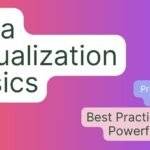Python has emerged as a power in data analysis, most of it centered around versatile libraries like Pandas and NumPy. This paper gives an in-depth review of how these tools enable one to perform efficient data manipulation, exploration, and analysis tasks. Knowing exactly what Python can do with Pandas and NumPy is therefore very critical to deriving value from any dataset, whether you are a new or experienced data analyst.
Introduction to Python for Data Analysis
The popularity of Python in data science can be accorded to its rich library ecosystem. The core element of this ecosystem is Pandas and NumPy, providing power in data manipulation and numerical computing, respectively. These libraries have huge potential from cleaning data to advanced statistical analysis; hence, Python is one of the languages chosen by data professionals today.
Key Libraries for Data Analysis
NumPy (Numerical Python):
- Definition and Core Features: NumPy is an excellent library for handling large-size, multi-dimensional arrays, and matrices. It is pinpointed to some of the essential mathematical functions that enhance its performance for efficient numerical computations. Thus, it provides the backbone for many scientific computing tasks in Python, supporting these operations with functions that facilitate array creation, manipulation, and statistical analysis.
- Key Functions: Array operations, mathematical functions for mean and median, standard deviations, linear algebra operations for matrix multiplication and eigenvalues, generation of random numbers.
Pandas:
- Definition and Core Features: Pandas is included with NumPy; it provides high-level data structures for intuitive and straightforward handling and analysis of data. Hence, this module is useful for data cleaning, transformation, and basic to advanced data exploration for insights.
- Key Features: The features are reading and writing various formats—CSV, Excel, SQL, and more—aligning and reshaping of data, indexation and selection, handling missing data, and very effective and efficient facilities related to data aggregation and transformation.
Using Pandas for Data Analysis
Pandas empowers data analysts with versatile tools for efficient data handling:
- Data Structures: Series and DataFrame are 1D and 2D labeled information carriers, respectively. These enable ordered data manipulation and analysis.
- Data Manipulation: Indexing, slicing, filtering, merging, and joining datasets make data transformation and extraction easy.
- Data Cleaning: Treatment of missing/duplicate data, type conversion in data, normalization, and standardization are some of the ways through which data is improved.
- Exploratory Data Analysis (EDA): This underlines the statistical summaries, visualization, and correlation analyses that detail the pattern and interrelations of the data.
Using NumPy for Numerical Computations
NumPy’s capabilities are essential for performing complex numerical operations:
- Array Operations: Efficient creation, manipulation, and computation on arrays enhance data handling capabilities.
- Mathematical Functions: Statistical functions (mean, median, variance), linear algebra operations (matrix multiplication, inverse), and random number generation support advanced numerical computations.
Tools for Data Analysis in Python
Python’s data analysis ecosystem includes complementary tools for visualization, machine learning, and statistical modeling:
- Matplotlib, Seaborn: Visualization libraries create static, animated, and interactive plots to visualize data insights effectively.
- Scikit-learn: Machine learning library offers tools for data preprocessing, supervised and unsupervised learning algorithms, and model evaluation.
- Statsmodels: Statistical modeling library enables hypothesis testing, regression analysis, and advanced statistical techniques for data analysis.
Best Practices in Python Data Analysis
Effective data analysis in Python involves adopting best practices to ensure accuracy and reproducibility:
- Efficient Code: Utilize vectorized operations in NumPy and Pandas for optimized performance with large datasets.
- Documentation: Document analysis workflows using Jupyter Notebooks or markdown cells to enhance transparency and facilitate collaboration.
- Reproducibility: Version control (Git), virtual environments (Anaconda, virtualenv), and containerization (Docker) ensure reproducibility of analysis results.
- Integration: Integrate Python with databases (SQL, NoSQL) and cloud platforms (AWS, Google Cloud) for scalable data processing and storage.
Real-World Applications
Python and its libraries find applications across diverse industries for various data analysis tasks:
- Finance: To interpret data, understand risk factors, optimize portfolio allocation, and run algorithmic trading strategies.
- Healthcare: Patient data analysis for disease diagnosis, treatment outcome analysis, and healthcare management.
- Marketing: Customer segmentation, campaign performance analysis, sentiment analysis, and personalized marketing strategies.
- Research and Academia: Analyzing research data, conducting statistical studies, and publishing findings in scientific journals.
Challenges and Future Trends
Despite its advantages, Python data analysis encounters challenges such as data privacy, quality, and model interpretability:
- Data Privacy: Ensuring compliance with data privacy regulations (e.g., GDPR, HIPAA) when handling sensitive information.
- Data Quality: Addressing issues like missing data, outliers, and data consistency to maintain analysis integrity.
- Model Interpretability: Ensuring transparency and interpretability of machine learning models to gain trust and insights from stakeholders.
Future Trends
Looking ahead, Python data analysis trends include:
- AI and Automation: Further integration with AI/ML for automated data analysis, predictive modeling, and decision-making.
- Big Data and Cloud Computing: Exploiting distributed computing frameworks like Apache Spark and cloud platforms to scale up data processing and analysis.
- Ethics and Governance: Empathy in moral considerations, responsible AI practices, proper governance frameworks-foregrounded dimensions that support fairness and ethics in the use of data.
Conclusion
Coupled with Pandas and NumPy, Python is very potent in assisting data analysts to extract useful insights efficiently from complex datasets. It is when professionals master these tools and adopt the best practices that they can leverage data to drive innovation, solve business challenges, and make informed decisions across industries. With the evolution of Python according to technological changes, keeping up with the changes, new tools, or methodologies will help leverage its power in extracting meaningful insights from data in this very fast-changing digital age.
Additional Resources
For further reading on Data Analysis best practices and tools, consider exploring the following resources:
- Understand how python works: Transform Your Skills with Python
- Learn the techniques of Data Analysis: The Ultimate Guide to Data Analysis Techniques
- Learn about Big Data: Unlocking the Power of Big Data with Python



